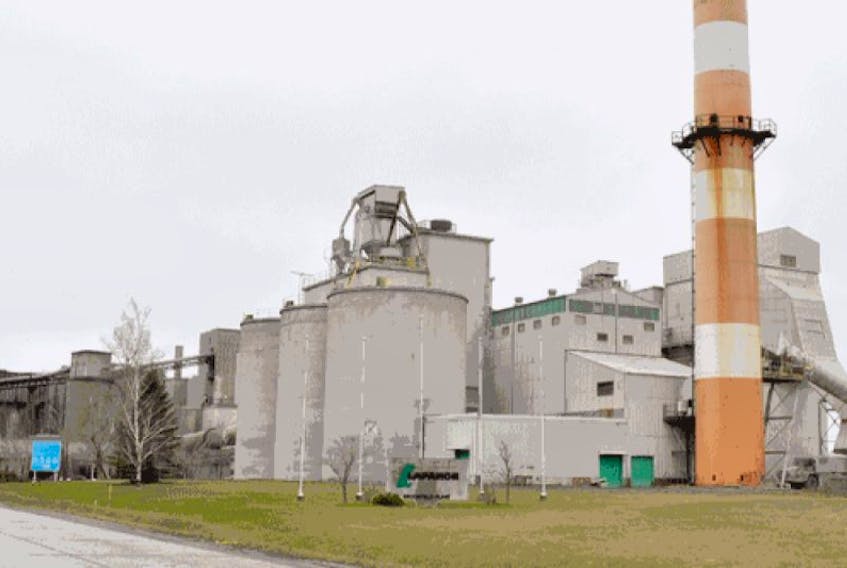The lawyer for a residents’ group that opposes Lafarge Canada’s plan to burn discarded tires to fuel its cement kiln says ministerial approval of the pilot project was flawed.
“The decision does not fall within a reasonable range of acceptable limits,” lawyer William Mahody argued at a Nova Scotia Supreme Court judicial review in Halifax on Tuesday.
“The environmental assessment is based on research into something other than this wholetire burning process.”
Lafarge Canada has proposed a one-year pilot project to burn 400,000 discarded tires in a kiln at its plant near Brookfield, Colchester County. Environment Minister Iain Rankin approved the environment assessment for the pilot project last July.
The residents’ group, many of whom had fought successfully to scuttle a similar plan more than a decade ago, filed notice in August for a judicial review of Rankin’s decision. In December, Justice Denise Boudreau heard arguments about whether to allow Ontario toxicological expert Doug Hallett to submit evidence for the citizens’ group at the review. Boudreau ruled in January that Hallett’s report would not be permitted.
Sean Foreman and John Keith, respective lawyers for the EnvironmentDepartment and Lafarge, argued Tuesday that Rankin made his decision based on the assessment evidence provided him.
At day’s end, Justice James Chipman said he would consider the arguments made Tuesday and the briefs submitted earlier before delivering a written decision later this month.
Foreman and Keith both argued that the Dalhousie University research that figured prominently in the minister’s decision did not have to provide an environmental guarantee for the project to go forward.
“No one is saying that we have a complete set of science here in Nova Scotia at the Lafarge plant,” said Foreman. “How can we approve this when we don’t have 100-per-cent science to support it? That is not a requirement and it is not the minister’s focus.
“The minister made that difficult decision after consulting all the evidence and he applied stringent conditions.”
Keith said Rankin put a plan in place to complete the testing and analysis during the pilot project.
“It’s not a case where Lafarge is being invited to go out and burn 400,000 tires, no questions asked,” Keith said. “There is ongoing monitoring. Any new information about any adverse affects must be submitted to the minister. There is not a lack of oversight.”
Keith called the pilot project an important “environmental experiment.”
Not exactly reassuring words for Fred Blois, who lives in Clifton, about 10 kilometres from the plant as the crow flies.
“We’re used as a test case, we’re an experiment,” said Blois, who complains along with others in the residents’ group that toxic dioxins and furans will be emitted from the smoke stack if Lafarge burns tires, toxins that they argue can adversely affect the health of people living 100 kilometres
from the plant.
“If you look at one of the bases of the Environment Act of Nova Scotia, the precautionary principle figures very prominently and it rails against that, it states that decisions shouldn’t be made on an experimental basis. Everything should be proven before the project takes place, at the instigator’s expense.”
The residents had hoped that Hallett’s report would be allowed, focusing among other points on the argument that when tires are burned they emit the cancercausing chemical NDMA (Nnitrosodimethylamine), which was very prevalent in a large tire fire in Hagersville, Ont.
The complainants also tried to introduce similar reports in arguments Tuesday but Chipman reiterated Boudreau’s earlier ruling that new information that wasn’t part of Rankin’s decision wouldn’t be allowed.
Foreman repeated several times that if the residents’ group wanted other information, including Hallett’s report, considered, they should have introduced them while the minister was mulling over his assessment decision.
Foreman called it the “failure of the respondents to produce the material that they now want the court to consider.”
Outside court, Blois said his group ought to have introduced the material earlier but they had grown increasingly frustrated with continually fighting the tire-burning plan and with department inaction on other unrelated complaints.
“We don’t have any faith with the Department of Environment,” he said. “The lack of actual action
with people complaining or how few cases are ever brought to trial or even fined, there is no trust with the department. I admit we should have been into this a long time before we were but we were just so frustrated.”
Mahody argued that Dalhousie professor Mark Gibson’s research was done in a university lab with shredded tires that did not account for burning whole tires, the temperature needed for combustion and mid-kiln injection. He said an assessment of the environmental effects of the mid-kiln injection of whole tires was never done.
Foreman countered that the temperature levels would be sufficient for complete combustion of whole tires but that was not the minister’s focus in providing approval.
“All we are doing is replacing 15 per cent of carbon fuels used by the plant with tires,” he said.
Rob Cumming, the environmental director of Lafarge Canada who was in town for what was expected to be a two-day court proceeding, said the company will not be ready to burn tires until late summer or early fall.
“We are completely committed to sharing the results of all the testing,” he said of the pilot project. “We have 40 years of experience using scrap tires and we are expecting good results.”









